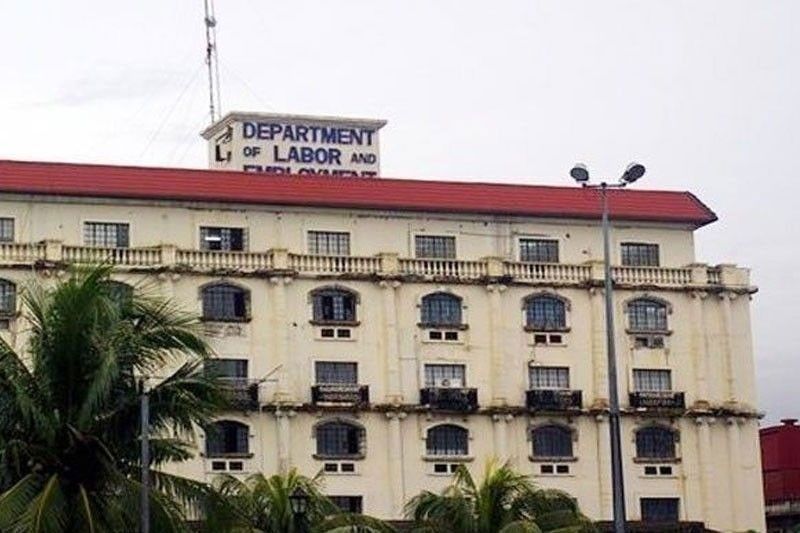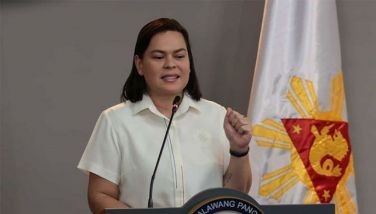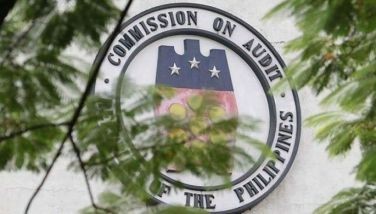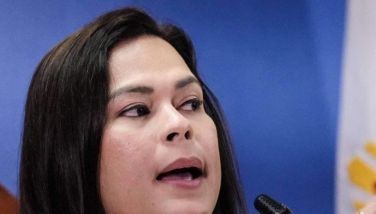DOLE rolls out employment recovery plan

MANILA, Philippines — The Department of Labor and Employment (DOLE) is rolling out a three-year national recovery plan in 2021 to generate jobs for millions of workers displaced by the COVID-19 pandemic.
Labor Assistant Secretary Dominique Tutay said they are finalizing the plan and a joint circular will be issued by the DOLE and other national government agencies for its enforcement.
“The national employment recovery strategy has not yet been finalized, but we hope to finish it by January,” Tutay told The STAR.
Tutay said DOLE intends to start the implementation of the national employment strategy by middle of the year.
She said DOLE, Department of Trade and Industry (DTI) and the Technical Education and Skills Development Authority (TESDA) initially started the plan, but other national government agencies have expressed willingness to join the program.
“There will be a joint memorandum circular for all national government agencies which committed their support to the development and implementation of the national employment recovery strategy,” Tutay bared.
“So, we are looking at about three years (for the program’s implementation),” Tutay added.
In 2020, DOLE focused almost all efforts – and shelled out billions of pesos – in extending assistance to displaced Filipino workers here and abroad.
As of October, DOLE has recorded over 3.8 million workers nationwide who lost their jobs or suffered from reduced working hours and income due to the pandemic. More than half a million overseas Filipino workers (OFWs) were also displaced by COVID.
Recruitment officials claimed that the industry nearly collapsed, with more than half of the agencies forced to close down as hiring of Filipino workers abroad dropped by 60 percent.
Labor Secretary Silvestre Bello III said the distribution of P16.4 billion in cash assistance approved by President Duterte under the Bayanihan to Recover as One Act (Bayanihan 2) is 95 percent complete, except for the funds allocated for displaced tourism workers.
He said DOLE provided 658,886 workers in the private sector with P3.311 billion in assistance under the COVID-19 Adjustment Measures Program (CAMP) utilizing the department’s regular fund.
Under the Tulong Panghanap Buhay sa Ating Displaced Workers (TUPAD) program, Bello said DOLE has released P4.5 billion in providing emergency employment to 939,209 informal workers affected by the pandemic and recent calamities as of Dec. 28.
“Roughly, P3.5 billion was disbursed in cash assistance to close to 350,000 overseas Filipino workers displaced by the pandemic under the Abot Kamay ang Pagtulong program under the Bayanihan 1 Heal As One Act,” Bello further noted.
Of the P16.4 billion, Bello said P4.1 billion was allotted for CAMP for formal workers, P6.2 billion for TUPAD for informal sector workers and P2 billion for AKAP for OFWs.
A total of P3.1 billion was also allocated for displaced tourism workers, P300 million for displaced workers from the education sector and P500 million for the emergency repatriation program.
Overseas Workers Welfare Administration (OWWA) chief Hans Cacdac said the government brought back to their home provinces 370,000 returning OFWs who were affected by the pandemic.
Cacdac said about 80,000 more COVID-affected OFWs are expected to return from various countries abroad in the first half of 2021.
Aside from cash assistance, OWWA shouldered the cost of free swab testing and hotel accommodations for the returning OFWs.
According to Cacdac, the number of OFWs who benefitted from OWWA’s different programs has dramatically increased in the first four years of the Duterte administration.
“On the average, 300,000 to 400,000 OFWs and their families are receiving cash payment from various OWWA (programs) compared to 60,000 to 70,000 beneficiaries in the past,” Cacdac disclosed.
But Cacdac said OWWA and DOLE are still supporting the proposed creation of a Department of OFWs so that there will be a government agency dedicated solely for them.
Tutay said DOLE is also providing one-time financial assistance of P30,000 to college dependents of OFWs affected by the pandemic.
“We have started payment and will continue until next year because the program is valid for school year 2020-2021,” she said.
Tutay, who also serves as director for DOLE’s Bureau of Local Employment, said the labor market in 2021 is expected to be “tight.”
“The first full batch of transition under the K-12 program is graduating in 2021 and they will be adding pressure in the labor market, plus the fact that we have 3.8 (million) unemployed as of October 2020 that left the labor force because of the pandemic,” Tutay said.
“That means the labor market will be very tight in 2021 and 2022 and its going to be a challenge for us as we open gradually our economy,” she pointed out.
US needs more nurses
The United States needs more foreign nurses, as it has seen 350,000 Americans killed due to the COVID-19 pandemic in past months, with daily cases adding to the 200,000 in US hospitals.
The demand for health care workers is so great that the United States Citizenship and Immigration Services (USCIS) recently issued a Policy Alert regarding the labor certification – one of the main requirements in petitioning a nurse, or highly skilled labor, to gain an EB3 immigrant visa or green card – from the US Department of Labor (DOL).
Since the DOL has predetermined that no sufficient number of US workers are “able, willing, qualified and available” for certain jobs, the agency has pre-certified certain occupations, such that employers seeking to classify foreigners in these positions can file both the labor certification application and petition with the USCIS.
This would allow for a faster way for hundreds of Filipino nurses who have been petitioned by US hospitals to work in the United States.
Recruitment and migrant expert Manny Eslani said that the DOL has pre-certified two group occupations, known as Schedule A occupations, which include registered nurses and physical therapists (Group I) and foreigners with exceptional ability (Group II).
Face-to-face skills training
Meanwhile, TESDA deputy director general Lina Sarmiento said they have been providing “face to face” training since Dec. 9 upon the approval of the Inter-Agency Task Force (IATF), to provide employment for workers displaced by the pandemic and natural calamities.
“Face-to-face skills training was allowed in order to help those who lost their jobs, including our countrymen who want to change jobs or in need of re-skilling or upskilling,” Sarmiento said in Filipino in a television interview.
Sarmiento stressed that face-to-face skills training is only allowed in areas under general community quarantine (GCQ) and with the minimum health protocols strictly enforced at the training centers.
Aside from face-to-face skills training, Sarmiento said TESDA is also allowed to conduct in person competency assessment for those applying for national certification.
Sarmiento noted that face- to-face skills training is limited to certain qualifications such as those related to construction and health.
In person assessment is allowed for almost all qualifications, though Sarmiento said most of their applicants are domestic helpers and caregivers seeking employment overseas. – Rudy Santos
- Latest
- Trending































